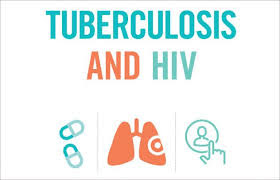The 2017-2021 National Strategic plan for HIV/AIDS and TB.
 |
| Image credit: UNAIDS.org |
The South African National Strategic Plan for HIV, TB and STIs 2017–2022 is a well written document that is aimed at providing strategic direction for the national response to HIV, TB and STIs (SANAC, 2017). The plan was developed by following a multi-sectorial approach and by using HIV/AIDS, TB and STI epidemiological data and it is not very much different form its predecessors. The plan is said to be based on the successes and failures of its predecessors, but it focuses more on the successes of the previous plans that their failures. The plan is not clear in terms of what will be done differently in order to ensure great progress during the current political and socio-economic climate in South Africa; even though it touches on the National development Plan. The plan also emphasizes on the involvement of the community, the use of technology, for instance the use of geospatial mapping and profiling to enhance resource allocation by districts (SANAC, 2017:4) but remains vague on the current status quo of such technologies and the districts’ capacity to use them effectively. Lastly, the plan is very specific in terms of its target populations for epidemic control and provides clear direction on how vulnerable groups are going to be treated going forward. We will therefore focus on these points in our critique of the plan while answering the question as to whether the plan is worth reading and our overall view in terms the points raised above.
What will be done differently?
Although the plan mentions the focus on a multi-sectorial approach, geographic targeting, prioritization of prevention, a national campaign to find the missing 150 000 people who need to receive TB treatment and their contacts, and building on the progress made in terms of HIV treatment, it lacks specifics in terms of how these are going to be done differently looking at the failures of the previous plans. It provides an optimistic view without critically evaluating the failures on the previous plans. Even though there has been a 34% decline in sexual transmission of HIV among those aged 15–49 in the past years (SANAC, 2017:4); there has been an increase in youth unemployment and unemployment and other social- ills such as crime including lack of health funding which may have an impact in the prevalence of HIV/AIDS, TB and STIs (SAHR, 2018:15).
Use of Technology and Community Involvement
The plan even though it mentions the use of data and data analytics for better decision making it does not elaborate on how the skills shortage in the health sector will be addressed so that those especially in rural areas can also benefit from such technologies. Even though it does mention that areas or districts with high burdens of HIV/AIDS, TB and STIs will be prioritized, it seems to work on an assumption that these areas or districts are well capacitated to enroll and implement such technologies and is blind to the fact that there are challenges related to how plans from national government get implemented at lower levels of government.
In conclusion the plan is well written and worth reading as it provides direction for the next five years with well written goals and a clear path on how they are going to be monitored and evaluated.
http://www.masobodehc.co.za/


Comments
Post a Comment